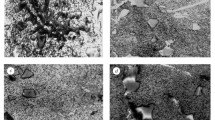Abstract
Residual stresses in case carburized steels stem from two major sources, both of which are associated with the (rapid) cooling of the steels from elevated temperatures. The first source is the more rapid cooling rate of the surface of the body, as compared with the rate of the interior. The second is the time lag in the transformation of the austenite on cooling between the high carbon and low carbon portions of the carburized body. The as-carburized residual stress intensities and states are altered to varying degrees dur-ing the course of the tests used to measure the mechanical properties. The significant changes take place not only as the result of the strain of the measurement test itself, but also because of the transformation of any austenite retained in the case of the carburized part, and because of stresses developed within the part by virtue of the rheological inter-actions which occur within the part since it is, in essence, a composite material. The resultant observed mechanical performance of the carburized body is the summation of the intrinsic mechanical properties of the material itself, and the effects of the residual stresses as-carburized, and as-altered by the above phenomena.
Similar content being viewed by others
References
D. P. Kristinen:Trans. ASM, 1958, vol. 50,pp. 227–41.
A. Rose and H. P. Hougardy:Symp. Transf. and Hard. Steels, pp. 155–67, University of Michigan, 1967.
D. M. Nakhimov and A. Ya. Novikova:Met. Sci. Heat Treatment, July-August 1968, vols. 7–8, pp. 518–20.
M. Motoyama:Suppl. Jap. Inst. Met., 1968, pp. 142–46.
L. J. Ebert and J. D. Gadd:Fiber Comp. Matis., pp. 89–113, ASM, 1965.
L. J. Ebert, S. S. Hecker, and C. H. Hamilton:J. Comp. Mater., 1968, vol. 2, pp. 740–48.
S. S. Hecker, C. H. Hamilton, and L. J. Ebert:J. Mater., 1970, vol. 5, pp. 868–900.
C. H. Hamilton, S. S. Hecker, and L. J. Ebert:J. Basic Eng., 1971, vol. 93, series D, no. 4, pp. 661–70.
F. T. Krotine, M. F. McGuire, L. J. Ebert, and A. R. Troiano:Trans. ASM, 1969, vol. 62, pp. 829–38.
K. Funatani:Suppl. Jap. Inst. Met., 1968, pp. 565–68.
L. J. Ebert, F. T. Krotine, and A. R. Troiano:J. Basic Eng., 1965, vol. 87, series D,no. 4, pp. 871–74.
L. J. Ebert, F. T. Krotine, and A. R. Troiano:MetalsProgr., September 1966, pp.61–64.
Author information
Authors and Affiliations
Additional information
This paper is based on a presentation made at a symposium on “Carburizing and Nitriding: Fundamentals, Processes and Properties” held at the Cincinnati Meeting of the Metallurgical Society of AIME, November 11 and 12,1975 under the sponsorship of the Heat Treatment Committee.
Rights and permissions
About this article
Cite this article
Ebert, L.J. The role of residual stresses in the mechanical performance of case carburized steels. Metall Trans A 9, 1537–1551 (1978). https://doi.org/10.1007/BF02661936
Issue Date:
DOI: https://doi.org/10.1007/BF02661936




